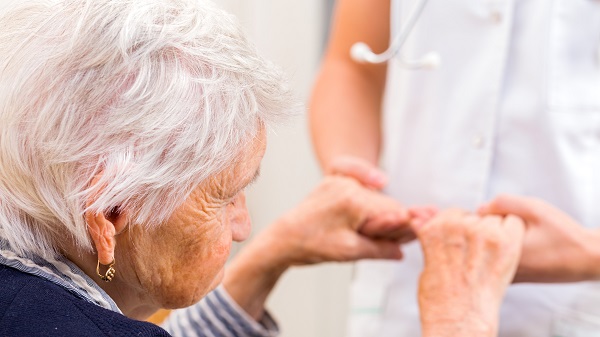A trial to remove confusion about delirium in older people after surgery
Going under the knife comes with risks but for older people, there’s an added danger: post-operative delirium. And if patients go undiagnosed, an untreated delirium can have dire consequences.
A new trial starting this year aims to better spot and treat over-65s who might otherwise slip through the cracks.
Steered by University of Wollongong Professors Val Wilson and Victoria Traynor, the nurse-led project will develop early detection checklists and delirium treatment plans with nurses and other hospital staff. If successful, this model could be adopted by hospitals locally and abroad.

For patients of any age emerging from the fog of a general anaesthetic, it’s not uncommon to develop delirium, where they quickly become disorientated and confused, agitated or lethargic.
“It’s usually very short-term that self-corrects, but for a significant percentage of patients, especially people aged over 65, that delirium can go undetected,” says Wilson, who also holds a position at the Illawarra Shoalhaven Local Health District Nursing & Midwifery Research Unit.
Indeed, up to 60% of older people are at high risk of developing post-operative delirium. There are a few reasons behind this susceptibility, the most common being an untreated infection. Others include dehydration, which results in electrolyte imbalance, and polypharmacy, where multiple medications can interact to trigger a delirium.
“Delirium is very common in older people after an operation because of the physical stress of surgery, but you can imagine those other risk factors are also highly likely after an operation,” Traynor says.
If the driver of a delirium is identified, it is often relatively straightforward to treat. For instance, if a patient is dehydrated, they could have fluids replenished intravenously. For an infection, they’re prescribed antibiotics.
Yet despite being relatively common in older people, delirium frequently flies under the radar. Diagnostic tools are available to hospitals, Traynor says, but they’re generally used in an ad hoc manner. Instead, confusion in an older person who is recovering after surgery might be written off as dementia symptoms or simply “old age”.
To further complicate matters, infection detection in older people is tricky because – due to homeostasis changes related to ageing – older people won’t necessarily present with a high temperature.
So around a quarter to more than two-thirds of older people recovering in hospital with a delirium go undiagnosed – and untreated. Patients with delirium are more likely to stay longer in hospital, be transferred to a care facility, experience more deliriums down the track and develop a chronic condition. A recent paper published in BMJ Open estimated that delirium causes 10.6% of dementia in Australia.
To help develop ways for nurses to more easily and accurately pick up deliriums that would otherwise be missed, Traynor and Wilson received a Translational Research Grant from NSW Health in 2019.
Kicking off this year – the International Year of the Nurse and the Midwife – the project will focus on Bega, Wollongong and St George hospitals, where around 12,000 operations are performed on older people each year.
Traynor and Wilson will first raise awareness, within hospital staff, about delirium and its ramifications. In close consultation with nurses, the pair will then design and implement customised checklists to diagnose delirium in older people after surgery, Traynor says.
“We’re very much focused on working with the nurses and developing protocols that are suitable for each of the hospitals.”
Nurses will even practise with actors in clinical simulations before incorporating the checklist in their work.
“What I think is really neat about this project is it could have an immediate impact on the healthcare of older people, their families and the healthcare system,” Wilson says.
Towards the end of the two-year project, Wilson and Traynor will measure the tools’ effectiveness and patient outcomes, and follow up with nurses to see if, for instance, they continued to use the diagnostic tool over the entire intervention period.
“We have a long-term vision,” Traynor says. “We’re already thinking into the future and using strategies that will make sure the findings are translatable and transferable to other regions.”
Updated 3 years ago